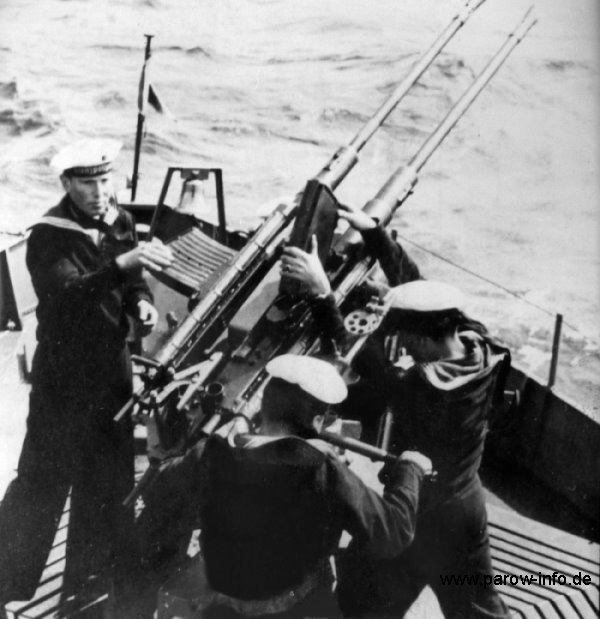- Yes
- No

TL;DR:
Coastal Vessel, early East German patrol boat, basically a post-war R-boat.
History:
The 27.8m Seekutter KS-Boats started life in a 1948 request by the East German Hauptverwaltung Seepolizei (Main Administration Sea Police, predecessor to the Volksmarine) to fulfil the need for an armed border patrol ship to combat smugglers and other criminal elements. The Berlin Yachtwerft took the request and designed a 26m “Seekutter”, with 7 ships (6 production and a modified school ship) built in 1950-1951. The design was quickly modified into the “27.8-Meter-Seekutter”, lengthening the hull and enlarging the superstructure, along with adding provisions for the fitting of anti-submarine systems. 22 of these boats were constructed, and the “Seekutters” were designated as “Küstenschutzboote” (Coastal Protection Boat) or KS-Boote. They were powered by 3 Jumo 205 aircraft diesel engines that had been stored in the Rostock Diesel Engine Plant and armed with 20mm Flak 38 or Oerlikon autocannons.
In 1953, after the commissioning of multiple submarines into the West German Navy, a submarine hunter squadron was formed, and the KS-boats were transferred there, being refitted with depth charge racks and a sonar system. Additionally, in 1952, the Border Sea Police was formed to take over border patrol duties, and 8 KS-boats were transferred to them, being rearmed with 2 twin KPV or DShK MGs and fitted with a Zarnitsa navigation radar (also some of the submarine hunters were refitted like this too). By the 1960s, the Jumo 205 diesels had reached the end of their lifespan and replacement parts had dried up, so all KS-boats had to be refitted with new engines. As newer and more modern ships had taken over the task of hunting submarines and eschewed the need for them to be fast, they were refitted with much less powerful diesels which reduced their speed by about half. The boats serving as submarine hunters were soon decommissioned, and transferred to the border police or turned into school ships and air traffic control boats. By the 1970s all ships had been decommissioned and expended or scrapped.
Specifications:
Armament: (early)
1x2 and 1x1 20 mm Flak C/38 or 2x1 20 mm Oerlikon autocannons
2 Depth Charge Racks (12 depth charges)Armament: (late/border police)
2x2 14.5 mm 2M7 or 12.7 mm DShK-2UK
2 Depth Charge Racks (12 depth charges)Displacement:
68 tons standard
78 tons fullLength: 28.8m
Beam: 4.8m
Draft: 1.5m
Propulsion: 3 Jumo 205D diesel engines, 1600 hp, driving 3 shafts
Speed: 24 knots (44.4 km/h)
Range: 400 nmi (at 18 knots)
Crew: 20
Systems:
Tamir-10 sonar
Zarnitsa navigation radar (late/border police)
Images:
Early:
Late:
Drawings:
Sources:
Mehl, H., Schäfer K, & Israel, U. (1989). Seekutter mit Flugzeugmotor. In Vom Küstenschutzboot Zum Raketenschiff: Schiffe und Boote der Volksmarine (pp. 26-30). Militärverlag der Deutschen Demokratischen Republik.
https://www.navypedia.org/ships/germany_east/gdr_cf_13.htm
https://www.ddr-binnenschifffahrt.de/dienstschiffe-gb-kueste.htm








